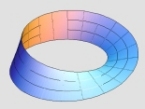Plodder
Posts: 1001
Joined: 7/28/2003
From: New Zealand
Status: offline

|
From their blog:
quote:
One of the strengths of unconventional fighters (Uncon for short) is that they blend with the noncombatants and choose where and when to fight deliberately. This creates a problem for us, as designers, since a direct simulation would require us simulating such things as cultural habits, economic activity, traffic, daily civilian activities, thousands of autonomous “entities” (i.e. people), etc. You don’t have to be a game designer to see that this is actually more work than the military side of the simulation! Even then - due to the vary nature of playing a wargame scenario players will tend to be much more suspicious than in real life, making it unrealistically difficult for Uncons to blend with the crowd; while at the same time the repercussions for unrealistic actions (such as shooting civilians on mere suspicion) cannot be enforced in a realistic way in a game.
 
The solution we came up with simulates unconventional warfare in a highly abstracted way. Civilians are not represented at all in any direct sense, removing all the years of work it would take to simulate them. Instead, unconventional units are simply hidden from the US player until his units have reason to “suspect” there is a hostile unit, at which point it is spotted and targetable. In game terms, some units have a “stealth rating” that other units lack.
 
There are five basic types of Uncons in the game: transports (civilian vehicles used as transport), Technicals (civilian vehicles with mounted heavy weapons), Fighters (mercenaries and guerrilla soldiers), Combatants (ad hoc civilians picking up a weapon) and Specialists. Out of those, only Specialists (Spies, IEDs, and VIEDs) are “stealthy”. All of the others are not attempting to remain hidden, since they carry visible weapons and/or unitforms or special clothing, and for them the normal spotting rules apply.

Spies are unarmed informants. They have no weapons and their sole purpose is to be the “eyes and ears” for the Syrian player. IEDs are stationary roadside bombs, varying in both size and type (wire, radio, cell phone), which are detonated by an armed Uncon triggerman. VIEDs are cars packed with explosives, driven by a suicide bomber and usually accompanied by a spy directing the driver and designating targets.

The “stealth” rules apply to all Specialists except for the triggermen, who are armed. By default, Specialists are invisible to the US side at the beginning of a mission. This has nothing to do with line of sight calculations. The Specialist unit could be in plain view of US forces, and would still be invisible to the US player. For them to get spotted a Specialist must do something “suspicious”.
 
The Syrian player is able to move Specialists as he would any other units, though what is done, how, and where has a direct impact on the “stealth” of the Uncon unit. Think of it this way… as a soldier, would you be suspicious of a civilian crawling behind a wall? How about a taxi driving through the open desert towards your positions? Units engaging in questionable behaviour like this are more likely to be spotted than if they were doing something less suspicious. For example, walking down a road in plain sight would be the most normal thing in the world, and would therefore not lead to a stealth reduction. A car driving along a road at a normal speed would not generally be seen as a threat. However, the closer the Specialists get to US forces, the less likely they will remain hidden. This is a conventional war setting, so any civilians approaching military units would be viewed with heightened suspicion.

After an Uncon surpasses a stealth threshold he becomes identified as a combatant, and therefore immediately visible to the US player as a hostile target for the remainder of the game.

This simple system eliminates all sorts of possible pitfalls and problems in a very elegant way. Players don’t have to cope with decoys, civilian traffic, or noncombatants, which would lead to a lot of micromanagement and distraction for what is effectively a minor side aspect of the game. We don’t have to worry about simulating the ramifications of killing innocent civilians, or programming all sorts of AI behaviour which would have no meaningful impact on the combat side of game. And yet, despite the various abstractions, the Syrian player has direct control of his Uncon forces.

Best of all, the end result is pretty realistic. If all goes well (from the Syrian perspective), the US player will only realize where an IED is when it detonates. On the flip side, blatant unrealistic use of Uncon Specialists will likely result in them getting spotted, and mowed down, before they are able to do anything useful. Due to the abstractions in the system, additional aspects such as civilian population density can be integrated seamlessly and without binding excessive resources during development or during gameplay. This leaves our development resources focused on the main aspect of the game, conventional warfare, while at the same time sufficiently simulating a full spectrum asymmetric warfare environment. Something that no other commercial wargame has done before.
okay, that last bit may sound a bit propagandarish(is that a word? :D) but it seems like a good compromise to me.
< Message edited by The Plodder -- 7/17/2007 9:48:37 PM >
_____________________________
Gen. Montgomery: "Your men don't salute much."
Gen. Freyberg: "Well, if you wave at them they'll usually wave back."
|
 Printable Version
Printable Version


























 So tell me again, how is this different from WWII?
So tell me again, how is this different from WWII? 

 New Messages
New Messages No New Messages
No New Messages Hot Topic w/ New Messages
Hot Topic w/ New Messages Hot Topic w/o New Messages
Hot Topic w/o New Messages Locked w/ New Messages
Locked w/ New Messages Locked w/o New Messages
Locked w/o New Messages Post New Thread
Post New Thread